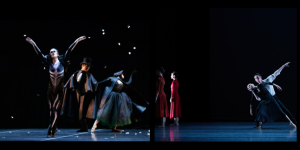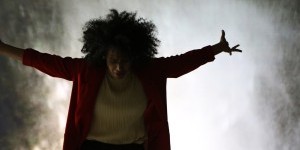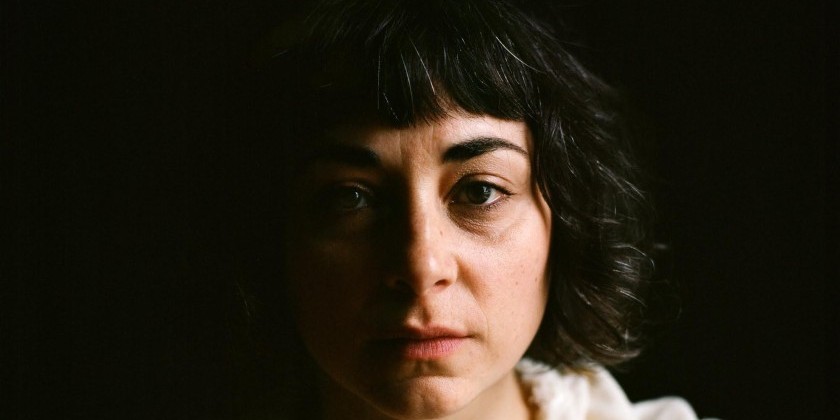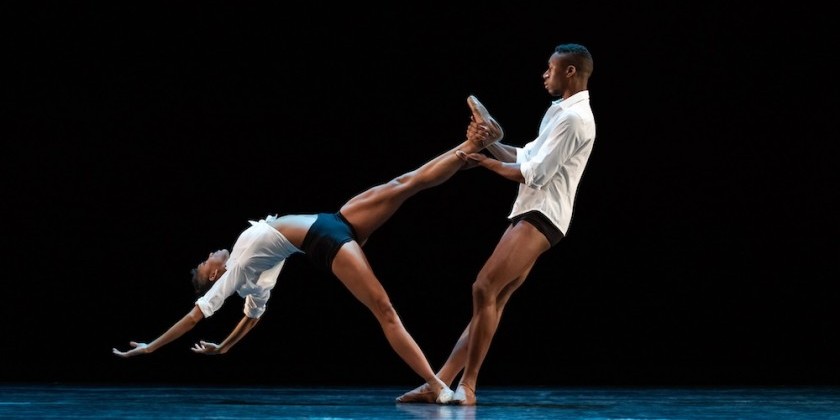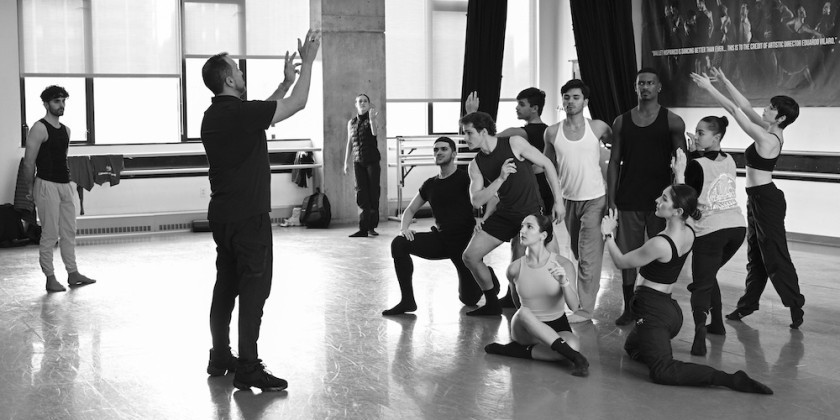
THE DANCE ENTHUSIAST ASKS: Anthony Rizzi, “What Makes a 21st Century Artist?”

Anabella Lenzu, The Dance Enthusiast's 2024 Moving Visions Editor, Shares Her First in a Series of Interviews with Dance/Theater Artists
Cover photo: Courtesy of Anthony Rizzi, dancing with the Frankfurt Ballet (Ballett Frankfurt) in William Forsythe's The Loss of Small Detail
When I think of capturing the essence of a 21st century dancer, I cannot think of a better person than Anthony Rizzi. A major figure in the dance scene in Europe for the past 37 years, he brings an underground, raw sensibility to his work whether creating for an opera house, museum, black box theater, or his own apartment.
An Italian-American born dancer, actor and creator, Rizzi trained at the Boston Ballet and for 20 years, collaborated with William Forsythe at Ballet Frankfurt, and worked intensely with Belgian director, Jan Fabre, among many other performance innovators. Rizzi has taught ballet and improvisation to dancers at the Boston Ballet, La Scala de Milan, and the Bayerisches Staatsballett in Munich. He has created choreographies for companies around the world, and with his own company, Tony Rizzi and The Bad Habits, he is known for combining his visual art, movement expertise, text, and social commentary in an often humorous and ironic fashion. — Anabella Lenzu
Anabella Lenzu, 2024 Moving Visions Editor for The Dance Enthusiast: How do you see the role of the dancer in the culture now?
Anthony Rizzi: I don't think it's really any different from being a dancer in any time period. It's about remembering and fighting against the general atmosphere of the world to allow yourself to be a vulnerable person — to be able to show the world things that they might have forgotten.
I think that's the role of a performer and how you understand things about life. as an artist you're not there to give a message to someone, or to teach someone something, it’s to help them remember.
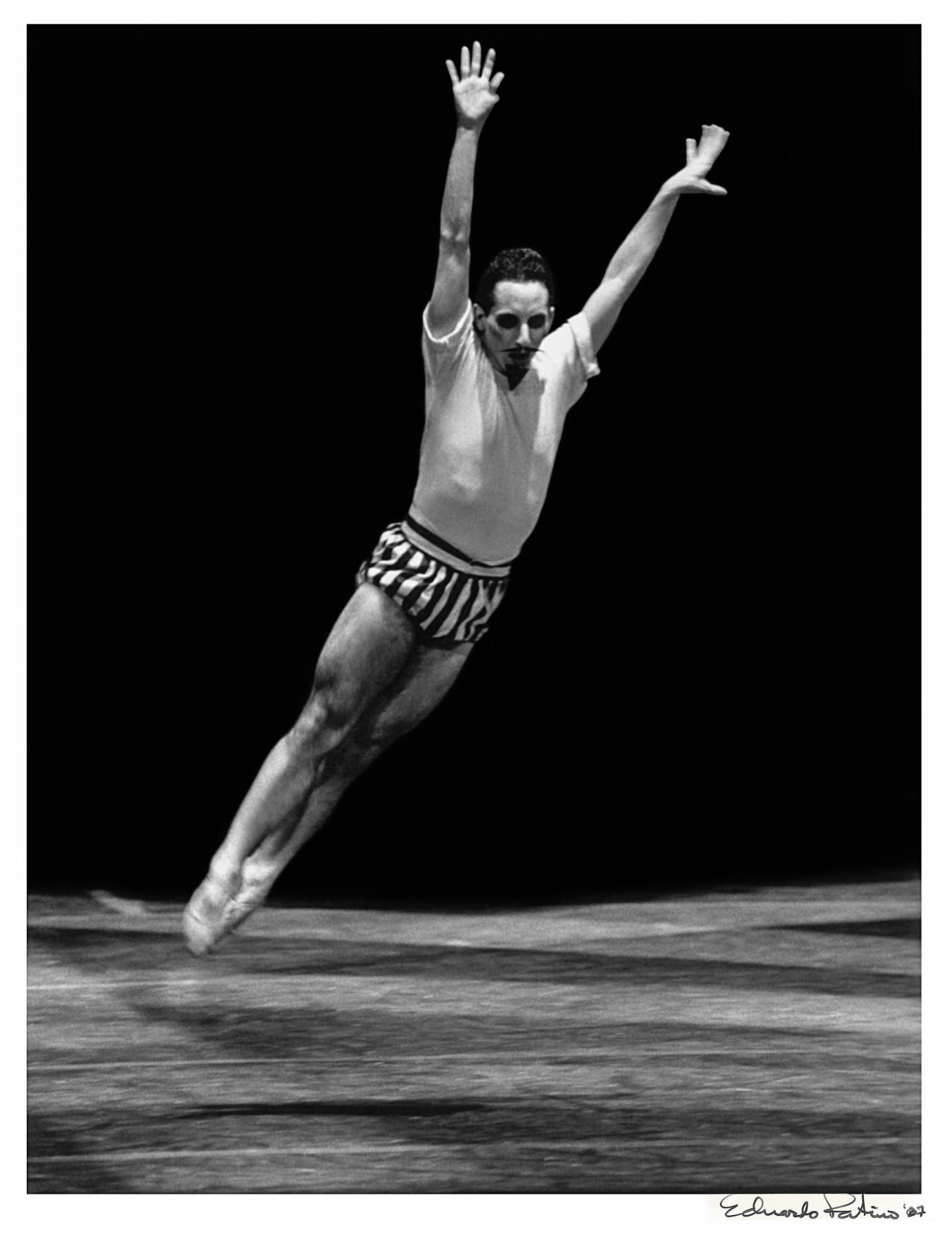
Let’s talk about the training dancers/performers now, in this moment in 2024. You’ve worked with so many different creators, what advice would you give dancers today about how to approach their art?
In my journey as a dancer, I learned so much from being afraid, feeling embarrassed, feeling resistance against something, or going into a cliché. Doing something cliché will, maybe, transform you. Never being embarrassed, being perfect, or always feeling good — that's not how you grow as an artist.
When I worked with Billy Forsythe, it was very different from when I worked with Bob Wilson, or Jan Fabre. As a performer, you are the instrument for their visions.
I often tell my students that as performers, you always have to show ideas to the choreographer or director. They don’t know what they want. They act like they do. My job as a dancer is to show them what they want, to offer a suggestion of what I think fits really well. I feel like there's a lot of fear [to do that], but it’s no good to sit back and wait for them to tell you what to do. You are helping them, and they guide you to show them what they’ll need for a scene.
How have you approached your experiences with the various choreographers you’ve worked for?
You know what, I am a contemporary dancer, but I never took a contemporary dance class! In my first rehearsal with Ballet Frankfurt, I just did what Billy told us and we experimented. I got obsessed with ballet, obsessed with the process of diving deep. As a dancer, you should dive deep.
My great friend, the performance artist Penny Arcade from New York, one of my female idols. I saw her perform when I was 27 and she completely changed my life. Among other things, she broke the fourth wall between herself and the audience.
Working with Billy, we were doing a piece called Kammer/Kammer (a film made live in front of the audience). Billy didn't really have much time to work with me and Dana Caspersen, the other main character. This was the first time for me to speak while performing. I did not get any help, I was on my own. I said to myself “OK Rizzi, you know how to dance with your mouth. Everything you know about danc put it in your mouth and let it be a conduit—the musicality in your body, put it into your face!”.

80% of my career was improvisation, you have to be pretty in the moment, as well as honest. Honesty helped me with the acting. I never took an acting class until I worked with Jan Fabre. Bill and Jan created wonderful playgrounds for me to play in on stage.
Jan Fabre’s trainings for his company and workshops are a very deep physical training, pushing the limits of how far your body could go, how fast you could go, how long . How to go from an explosion to something more internal. Or, from one character to another in a split second. This has led me to say that dance is just split-second decision making.
In 2018, I had the privilege of being at the NYU Skirball theater to see you perform Jan Fabre’s “Mount Olympus.” How was the rehearsal process for that 24-hour show? How did you endure it, physically, mentally, and spiritually?
I think of it as one of the great historical pieces, in terms of pushing the boundaries, and asking the question, “What is our role in the 21st-century.”
Creating was one of the most fun processes ever! Eight months of improvising and proposing scenes to Jan based on his ideas. Thousands of scenes made. You would either get responses from Jan like “Put it in your pocket” (we might use this one), or “Great, but save it for your own show.”
We would rehearse the dances and we would rehearse the transitions from one scene to the other. Every day we would increase our training time by half an hour. You get tired!
Doing this show marks you. Talking about intuition and thinking about the perfect training—meditation! When you're doing choreography, you know when it's going badly, you can't be judging yourself while you're improvising. You can't judge yourself while you're dancing.
When you are dancing in a 24-hour show, you just keep going. You just let everything go. In hour 20 of the show (approximately) my character, Tacious, has a solo.I was so tired after 20 hours performing and I had to go from being a crunchy, old man into this bird woman on demi-pointe. Being in the moment is the secret!
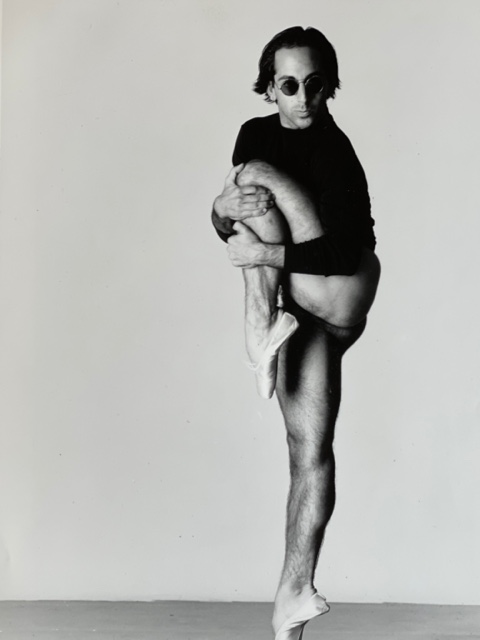
As a performer, you have to be in the moment, when you're that tired, there's no critique, and there is nothing but the efficiency of truly being in that moment…
I've been meditating for 20 years but still sometimes 15 minutes is going by and I'm thinking about what I want to cook for dinner, soon you start realizing it and refocus. I am applying that to my classes and my rehearsals.
Let’s talk about your creations and your own experimentation.
I feel like all of us are stealing and re-using. Every great artist is just a vampire or a pirate.
All of it has been done before. I can only do my own experimentation of my own work. I have to be personal, too personal! I experiment by not being afraid to be personal.
Dance was never enough for me to express what I wanted to say. I needed to experiment with “other things,” whether it’s photographs to appear in the show, or a film or maybe I step off the stage and into the public and put the dance sitting next to you so that it’s even closer to you. I need to experiment to find out how to reach people.
I like the idea of recycling because I feel we have our own “family tree” of inspiration, and that is what we talk about when we talk about dance theater. I was blessed that I had a DJ boyfriend for a very long time. I spent a lot of time in a DJ booth watching uncoordinated people dance. Afterwards I would take that and bring it to work the next day. I ended up making a piece of my mother and this boyfriend, who were my muses.
In another of my shows, I wanted to be a snowman that couldn't speak. Then my boyfriend and I broke up and I didn't want to be alone on the stage performing, so I called my mom to perform with me. My mom had mental illnesses, she was bipolar and obsessive compulsive, and I created a character for her. That was a great experience.
I keep myself open to experiencing everything.
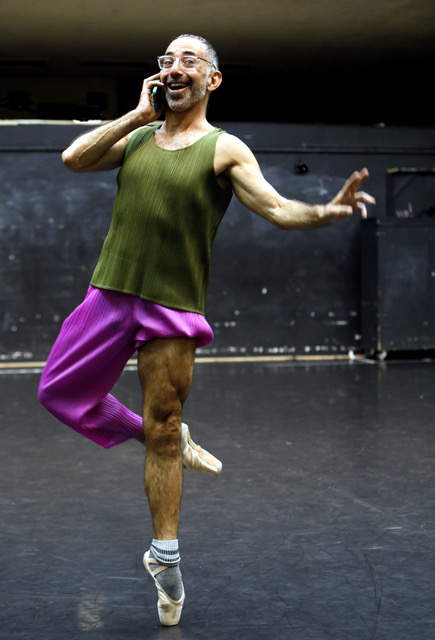
How you keep yourself fit for work? How do you train your body?
I go to the gym. I'm constantly moving. Sometimes just in my mind. The Alexander technique taught me how to direct my energy in the right way. That’s how I was able to dance at a high level at 50. Billy always said that being in shape is a state of mind.
The important thing is to understand that when you are performing you are giving gifts. You really need to love people, know that you are out of yourself, and be with others.
Created in 2020 as a way to lift up and include new voices in the conversation about dance, The Dance Enthusiast's Moving Visions Initiative welcomes artists and other enthusiasts to be guest editors and guide our coverage. Moving Visions Editors share their passion, expertise, and curiosity with us as we celebrate their accomplishments and viewpoints.






